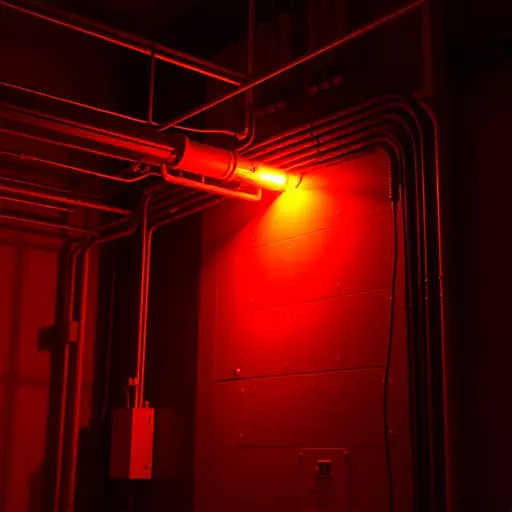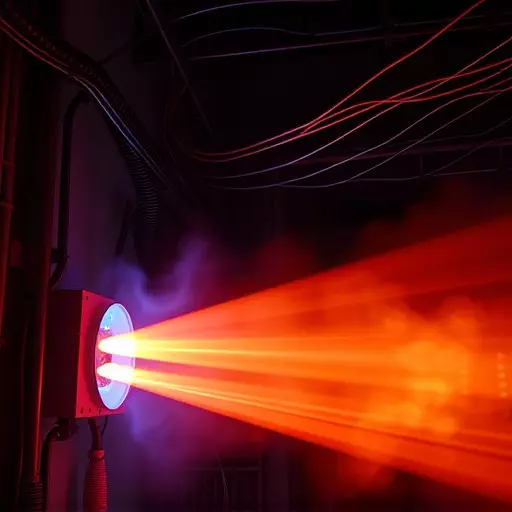Electrical Hazard Analysis, driven by the arc flash study process, is a vital approach for identifying and mitigating risks associated with electrical systems. It leverages calculations, equipment inspection, and adherence to arc flash safety standards (e.g., NFPA, IEC) to prioritize worker safety. This method involves reviewing electrical systems, simulating scenarios, analyzing fault currents, and determining high-risk areas. Global standards harmonize protection from electrical hazards, guiding equipment design, installation, and PPE use. By integrating the arc flash study process into Electrical Hazard Analysis, organizations can identify high-risk zones, implement targeted safety protocols, and foster a culture of safety awareness, thereby enhancing overall safety records and preventing fatal arc flash events.
Electrical hazard analysis is a critical component of workplace safety, particularly in industrial environments where electrical risks are prevalent. This comprehensive overview delves into the intricacies of understanding and conducting thorough electrical hazard analyses, focusing on key aspects like the arc flash study process, global safety standards, and risk mitigation strategies. By exploring these elements, we aim to equip professionals with valuable insights for enhancing electrical safety measures and preventing potential arc flash hazards.
- Understanding Electrical Hazard Analysis: A Comprehensive Overview
- The Arc Flash Study Process: Unraveling the Methodologies
- Electrical Safety Standards: A Global Perspective
- Identifying and Mitigating Risks in Industrial Environments
- Practical Application of Arc Flash Safety Measures
- Case Studies: Real-World Success Stories in Arc Flash Prevention
Understanding Electrical Hazard Analysis: A Comprehensive Overview
Electrical Hazard Analysis is a critical process designed to identify and mitigate potential risks associated with electrical systems and equipment. It involves a comprehensive evaluation of work environments where electricity is used, operated, or maintained. The primary goal is to ensure worker safety by minimizing the hazards posed by electrical energy, including arc flash, electric shock, and electrocution.
The arc flash study process forms a core component of this analysis, focusing on assessing the potential for an arc flash event and determining the corresponding protective measures required. This involves detailed calculations, equipment inspection, and adherence to established arc flash safety standards, such as those provided by organizations like the National Fire Protection Association (NFPA). By integrating these standards into their analysis, organizations can create robust safety protocols, ensuring a safe working environment for their personnel.
The Arc Flash Study Process: Unraveling the Methodologies
The Arc Flash Study Process involves a systematic approach to identifying and mitigating electrical hazards, particularly those associated with arc flash events. It begins with a thorough review of existing electrical systems and layouts, including equipment ratings, wiring configurations, and protective devices. This initial phase sets the foundation for understanding potential risks and triggers for arc flashes.
Next, the process delves into risk assessment, where various scenarios are simulated to determine conditions that could lead to arc flash hazards. By analyzing factors such as fault currents, voltage levels, and protection coordination, experts can identify high-risk areas and equipment. This data is crucial in aligning with arc flash safety standards, ensuring compliance, and implementing targeted strategies to minimize the impact of potential arc flash incidents.
Electrical Safety Standards: A Global Perspective
Electrical Safety Standards vary across the globe, but the goal remains consistent: to protect individuals and properties from electrical hazards. These standards guide the arc flash study process, which involves assessing risks associated with high-energy electric arcs. Each region adapts international guidelines like those set by the International Electrotechnical Commission (IEC) or the National Fire Protection Association (NFPA) to suit local conditions and regulations.
The arc flash safety standards focus on equipment design, installation practices, and personal protective equipment (PPE). They specify requirements for grounding, insulation, and overcurrent protection devices. Compliance with these standards is crucial in mitigating electrical hazards during maintenance or operation of electrical systems, ensuring that workplaces across the globe remain safe from potentially fatal arc flash events.
Identifying and Mitigating Risks in Industrial Environments
In industrial environments, electrical hazards are prevalent and pose significant risks to workers and facilities. Conducting a thorough Electrical Hazard Analysis (EHA) is essential to identify potential dangers and implement effective mitigation strategies. The arc flash study process is a critical component of this analysis, focusing on evaluating and minimizing the risk associated with dangerous arcs and flashes of electrical energy. By employing specialized equipment and following arc flash safety standards, organizations can assess the probability and magnitude of an arc flash event, enabling them to make informed decisions regarding personal protective equipment (PPE), system design changes, and other preventive measures.
This proactive approach goes beyond compliance with industry regulations, aiming to create a safer work environment. By integrating the arc flash study process into the EHA framework, industrial facilities can systematically identify high-risk areas, implement targeted safety protocols, and foster a culture of electrical safety awareness among employees. This holistic strategy ensures that risks are not only identified but also managed effectively, leading to reduced incidents and an improved overall safety record.
Practical Application of Arc Flash Safety Measures
The practical application of Arc Flash Safety Measures is a crucial step in any comprehensive electrical hazard analysis. It involves a meticulous arc flash study process that identifies potential hazards and assesses the risk associated with each. This process includes analyzing circuit diagrams, equipment ratings, and operational procedures to determine the likelihood and severity of an arc flash event. By understanding these factors, organizations can implement tailored safety standards aligned with industry-recognized arc flash safety measures.
Compliance with established arc flash safety standards is paramount in ensuring the well-being of personnel working near high-risk electrical equipment. These standards provide guidelines for proper personal protective equipment (PPE), de-energization procedures, and labeling systems to communicate potential hazards. Regular reviews and updates to these safety protocols are essential, as they evolve with advancements in technology and best practices within the industry.
Case Studies: Real-World Success Stories in Arc Flash Prevention
In the realm of electrical hazard analysis, case studies serve as vibrant testaments to the success of arc flash prevention strategies. These real-world examples demonstrate how meticulous assessments and adherence to arc flash safety standards can mitigate risks effectively. For instance, a comprehensive study process led one manufacturing facility to identify and address several potential arc flash hazards, significantly enhancing worker safety without compromising operational efficiency.
The transformation involved a systematic review of electrical systems, implementation of state-of-the-art protective gear, and rigorous training programs for personnel. By integrating these measures, the facility not only complied with industry-leading arc flash safety standards but also fostered a culture of safety consciousness among its workforce. This particular arc flash study process became a benchmark for other industries, underscoring the power of proactive electrical hazard analysis in fostering safer working environments.


